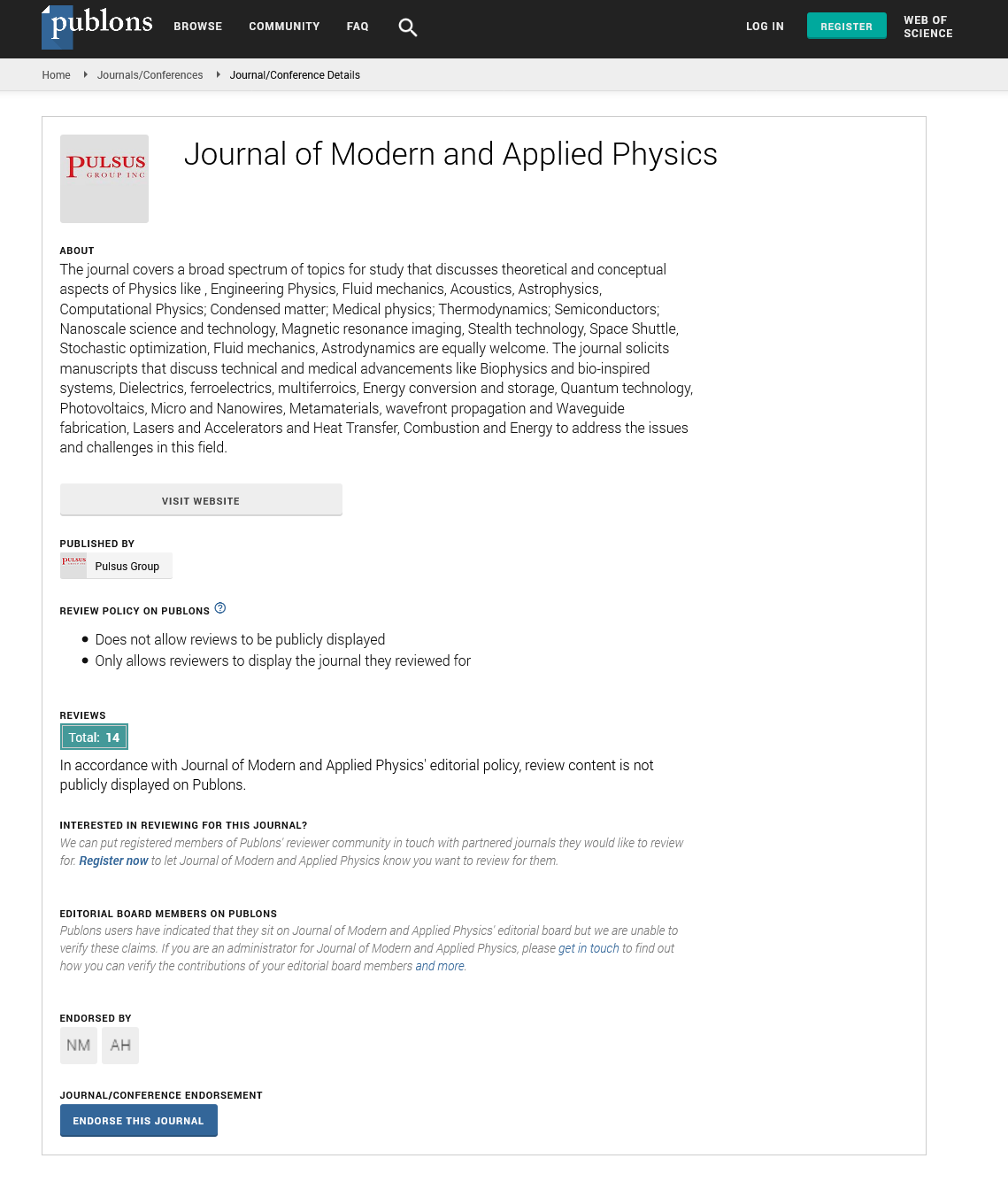Kummer surface and focal error
Received: 29-Dec-2023, Manuscript No. puljmap-24-6909; Editor assigned: 02-Jan-2024, Pre QC No. puljmap-24-6909(PQ); Accepted Date: Jan 18, 2024; Reviewed: 08-Jan-2024 QC No. puljmap-24-6909(Q); Revised: 12-Jan-2024, Manuscript No. puljmap-24-6909(R); Published: 28-Jan-2024
Citation: Ziep O. Linear map and spin II. Kummer surface and focal error. J Mod Appl Phys. 2022; 7(1):1-5.
This open-access article is distributed under the terms of the Creative Commons Attribution Non-Commercial License (CC BY-NC) (http://creativecommons.org/licenses/by-nc/4.0/), which permits reuse, distribution and reproduction of the article, provided that the original work is properly cited and the reuse is restricted to noncommercial purposes. For commercial reuse, contact reprints@pulsus.com
Abstract
World point images and Minkowski coordinates are calculated within a quadrifocal configuration. A Kummer surface detail K(X) of a general Riemann surface Xg is highly composite. Accessible with lowest complexity spinor matter is defined as a square root of a Kummer surface subjected to Hermite substitutions for a cubic invariant polynomial. Whereas coordinates ds2 are norms of cubic number field a spinor is a sextic number field having a cubic subfield. Despite a linear least squares algorithm K(X) yield a systematic focal error εfocal.
Key Words
Kummer surface; focal tensor; Riemann surfaces; hyperelliptic theta functions; Weber invariant; sextic number field; cubic number subfield
Introduction
A 3â??3 calibration matrix K depends on five parameters. Trifocal or quadrifocal geometry allows image calibration. In practice, the overconstrained system generates a focal error εfocal within a Linear East Squares algorithm (LLS). The present calculation shows that arbitrary changes δX yield a systematic focal error εfocal which serves as a basis for our understanding of spinor matter.





